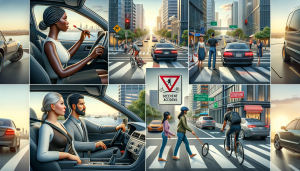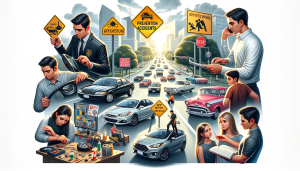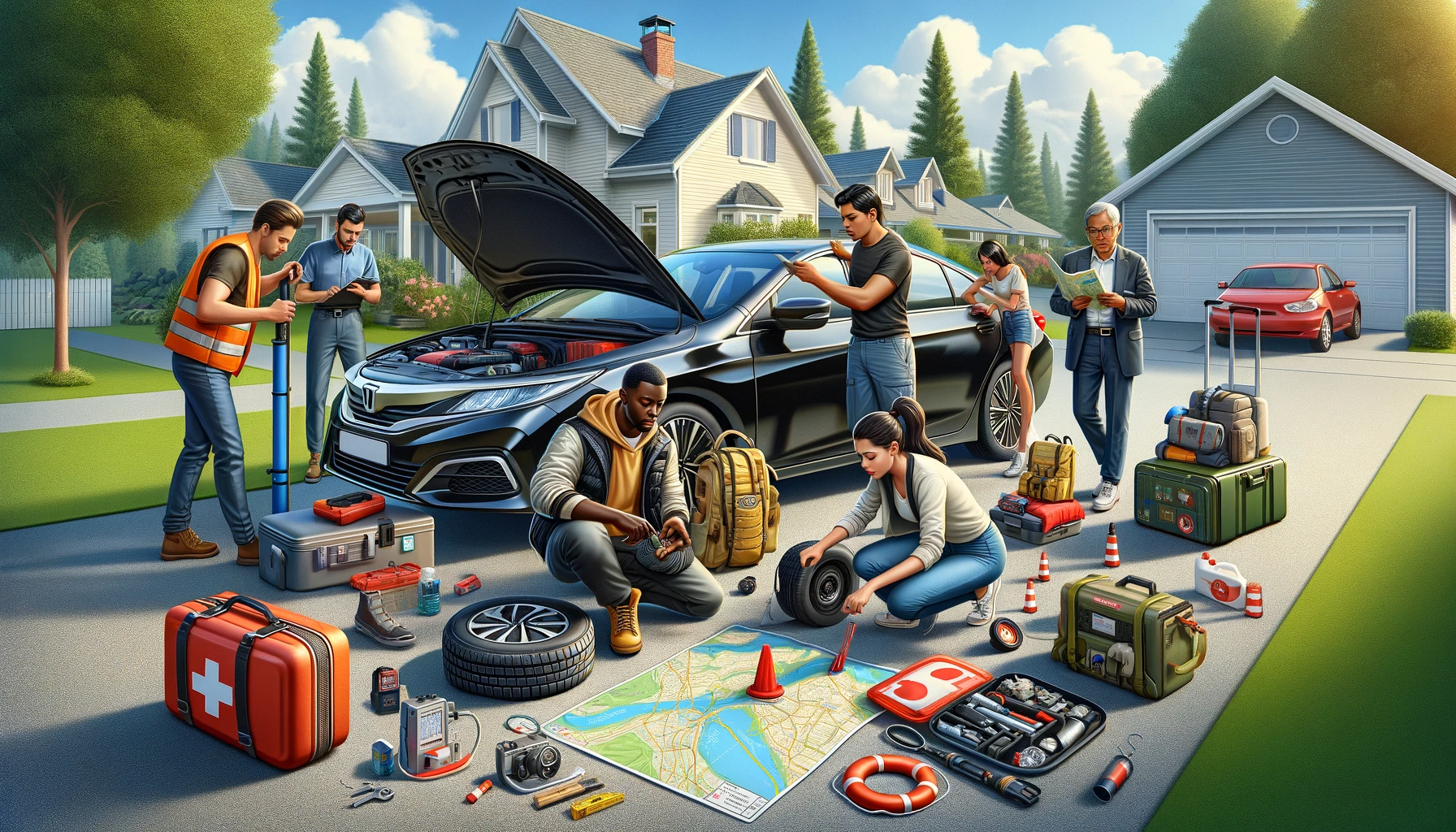Road Safety 101: Legal Resources for Auto Accident - Our 2023 Guide to Statistics and Advocacy
Introduction
Road safety is a critical concern for everyone who uses our highways, byways, and streets. With the increasing number of vehicles on the road, understanding the legal resources available after an
auto accident is more important than ever. This guide will walk you through essential statistics, common causes of accidents, and the necessary steps to take if you're involved in an accident, all while highlighting key advocacy groups dedicated to improving road safety.
Understanding Road Safety
Definition and Importance
Road safety refers to the measures and methods used to prevent road users from being killed or seriously injured. It encompasses a range of strategies, from traffic laws and vehicle standards to public awareness campaigns and driver education programs. Road safety is crucial because it saves lives, reduces
injuries, and prevents economic losses due to accidents.

Key Statistics
Global Road Safety Statistics
According to the World Health Organization (WHO), approximately 1.3 million people die each year due to road traffic crashes. Road traffic
injuries are the leading cause of death among children and young adults aged 5-29 years. These statistics underscore the global public health crisis posed by road traffic
injuries.
US Road Safety Statistics
In the United States, the National Highway Traffic Safety Administration (NHTSA) reported that in 2020, there were 38,824 fatalities due to motor vehicle crashes. This figure represents a 7.2% increase from the previous year, despite the reduction in road travel due to the COVID-19 pandemic. Distracted driving, speeding, and driving under the influence remain significant contributors to these fatalities.
Distracted Driving
Distracted driving involves any activity that diverts attention from driving, including talking or texting on your phone, eating and drinking, talking to people in your vehicle, or fiddling with the stereo, entertainment, or navigation system. Texting is the most alarming distraction because it combines visual, manual, and cognitive distractions.
Speeding
Speeding not only contributes to the severity of a crash but also increases the likelihood of an accident occurring. Higher speeds reduce the driver's ability to react quickly to road hazards and increase the stopping distance of the vehicle.
Driving Under the Influence
Driving under the influence of alcohol or drugs is a major cause of road accidents. Impaired drivers have reduced reaction times and impaired judgment, significantly increasing the risk of a crash.
Weather Conditions
Adverse weather conditions, such as rain, snow, fog, or ice, can make driving hazardous. These conditions reduce visibility and traction, making it harder to control the vehicle.
Vehicle Malfunctions
Mechanical failures, such as brake failure, tire blowouts, or engine problems, can lead to accidents. Regular vehicle maintenance and inspections can help prevent these issues.
Immediate Steps Post-Accident
Ensuring Safety
The first priority after an accident is to ensure the safety of everyone involved. Move to a safe location if possible and check for
injuries. Call emergency services if anyone is injured.
Collecting Evidence
Gather as much information as possible at the scene. Take photos of the damage, collect contact information from witnesses, and exchange insurance details with the other driver. This evidence will be crucial for your insurance claim and any legal proceedings.
Contacting Authorities
Report the accident to the police. An official police report can provide an unbiased account of the accident and is often required by insurance companies.
Legal Procedures
Filing a Police Report
Filing a police report is a crucial step after an accident. It documents the details of the incident and can be used as evidence in legal and insurance matters.
Reporting to Insurance Companies
Notify your insurance company about the accident as soon as possible. Provide them with all the details and cooperate with their investigation.
Seeking Legal Assistance
Choosing the Right Lawyer
Selecting a lawyer with experience in
auto accident cases can make a significant difference in the outcome of your case. Look for attorneys with a track record of successful settlements and trials.
Legal Representation Benefits
A lawyer can help you navigate the complexities of the legal system, negotiate with insurance companies, and ensure you receive fair compensation for your
injuries and damages.
Navigating Insurance Claims
Understanding Your Policy
Familiarize yourself with your insurance policy, including coverage limits and exclusions. This knowledge will help you understand what to expect when filing a claim.
Filing a Claim
Submit your claim to your insurance company promptly. Provide all necessary documentation, including the police report, medical records, and repair estimates.
Dealing with Insurance Adjusters
Insurance adjusters are tasked with evaluating your claim. Be honest and detailed in your communications with them, but be cautious about accepting initial settlement offers without consulting a lawyer.
Ensuring Fair Compensation
Ensure you receive fair compensation by thoroughly documenting your losses and negotiating assertively. A lawyer can assist in this process to ensure you are not shortchanged.
Advocacy and Support Organizations
National Highway Traffic Safety Administration (NHTSA)
NHTSA is dedicated to saving lives and preventing
injuries on the road. They provide valuable resources, statistics, and guidelines for road safety.

Insurance Institute for Highway Safety (IIHS)
IIHS conducts research and produces ratings for vehicle safety, helping consumers make informed decisions and advocating for safer vehicles and roads.
Local and State Advocacy Groups
Local and state advocacy groups work on various initiatives to improve road safety, from lobbying for better traffic laws to organizing community education programs.
Traffic Safety Education
Defensive Driving Courses
Defensive driving courses teach drivers how to anticipate and respond to potential hazards on the road, reducing the likelihood of accidents.
Community Awareness Programs
Community programs aim to raise awareness about road safety through events, campaigns, and education sessions.
School-Based Initiatives
Schools play a crucial role in road safety education, teaching children about safe behavior as pedestrians, cyclists, and future drivers.
Conclusion
Road safety is a shared responsibility that requires vigilance, education, and the right resources. By understanding the common causes of accidents, knowing what to do in the event of a crash, and utilizing available legal and advocacy resources, we can make our roads safer for everyone.
Look for an attorney who has the right legal resources for your legal needs.
Contact us here on the
Warmuth Law website or through our hotline 888-517-9888.
Frequently Asked Questions (FAQ's)
1. What should I do immediately after an auto accident?
Ensure safety first, collect evidence, and contact authorities. Notify your insurance company as soon as possible.
2. How do I choose a lawyer for an auto accident case?
Look for a lawyer with experience in auto accident cases and a track record of successful settlements and trials.
3. What are the common causes of auto accidents?
Common causes include distracted driving, speeding, driving under the influence, weather conditions, and vehicle malfunctions.
4. How can I ensure my insurance claim is fair?
Document your losses thoroughly and negotiate assertively. Consider consulting a lawyer to assist with the process.
5. What organizations can help with road safety advocacy?
Organizations such as the National Highway Traffic Safety Administration (NHTSA), Insurance Institute for Highway Safety (IIHS), and various local and state advocacy groups are dedicated to improving road safety through research, education, and policy advocacy.













